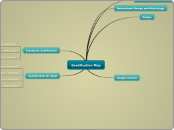Behaviorism
Behaviorism, also known as behavioral psychology, is a theory of learning based on the idea that all behaviors are acquired through conditioning. Conditioning occurs through interaction with the environment. Behaviorists believe that our responses to environmental stimuli shape our actions.
Operant Conditioning (learning by consequences)
Operant conditioning, also known as instrumental conditioning, is a method of learning normally attributed to B.F. Skinner, where the consequences of a response determine the probability of it being repeated. Through operant conditioning behavior which is reinforced (rewarded) will likely be repeated, and behavior which is punished will occur less frequently.
Applied Behavior Analysis
Teachers can use specific strategies based on operant conditioning to influence behaviors in their classrooms.
Strategies for Decreasing Inappropriate Behaviors
Social isolation
The time-out strategy includes removing an individual from one setting, where reinforcement is given, to another setting, where reinforcement is denied.
Response cost
Response cost, a type of negative punishment, always involves taking away something the individual desires.
Reprimand
Reprimands are verbal criticisms of behavior intended to be positive punishment.
Overcorrection
Overcorrection includes making restitution for inappropriate behavior,
Extinction
A teacher stops giving disapproving look to a student who continually speaks out of turn.
Satiation
The teacher asks the student to perform the negative or inappropriate behavior repeatedly, until it is no longer rewarding.
Strategies for Increasing Appropriate Behaviors
Positive practice
In using positive practice, the teacher has a student
perform the right or appropriate behavior. Students may write words they misspelled to practice the correct way to spell them.
Praise-and-ignore
Teachers ignore inappropriate behaviors displayed by an individual while praising the appropriate behaviors of others.
Reinforcing incompatible behaviors
In this strategy, teachers use reinforcement to increase the appropriate behavior (e.g., working on the assignment) while decreasing the behavior it is incompatible with (e.g., passing notes).
Shaping
Shaping is used when a behavior is not currently being displayed and therefore cannot be reinforced, such as when a student never brings a pencil and paper to class. The teacher does not have the opportunity to reinforce the behavior because it doesn’t occur. Shaping involves reinforcing small steps that move toward the behavior until the entire behavior is displayed.
Premack principle
A teacher may increase one behavior of students by providing an activity as reinforcement (e.g., playing a game, socializing with friends, drawing) rather than giving tangible rewards (e.g., stickers, smiley faces).
Punishment
Negative ( Removal Punishement )
Taking away (–) something desired by an individual, such as toys, free time, or wanted attention.
Positive (Presentation Punishement
Adding (+) or presenting something undesired by the individual, such as physical pain, unpleasant chores, or unwanted attention.
Decreases Behavior
Reinforcment
Negative
Taking away (–) something undesired by the individual, such as an annoying noise, an unpleasant chore, or unwanted attention.
Increases Behavior
Positive
Adding (+) something that is desired by the individual, such as praise, candy, or wanted attention.
Increases behavior
Classical Conditioning (learning by association)
Classical conditioning is the pairing of an unconditioned stimulus with a neutral stimulus, resulting in learning by association. Classical conditioning provides an explanation for why some children may experience anxiety or fears related to school.
Types of Response
Conditioned Response
A learned response caused by the conditioned stimulus.
Unconditioned Response
The automatic behavior caused by the stimulus, which can be physiological (e.g., someone flinching when your hand approaches) or emotional (e.g., fear).
Types of Stimulus
Conditioned Stimulus
It happens after pairing the unconditioned stimulus with the neutral stimulus.
Neutral Stimulus
Events that do not evoke an automatic response.
Unconditioned Stimulus
The behavior or event that evokes an automatic response (e.g., moving your hand quickly toward someone’s face);









